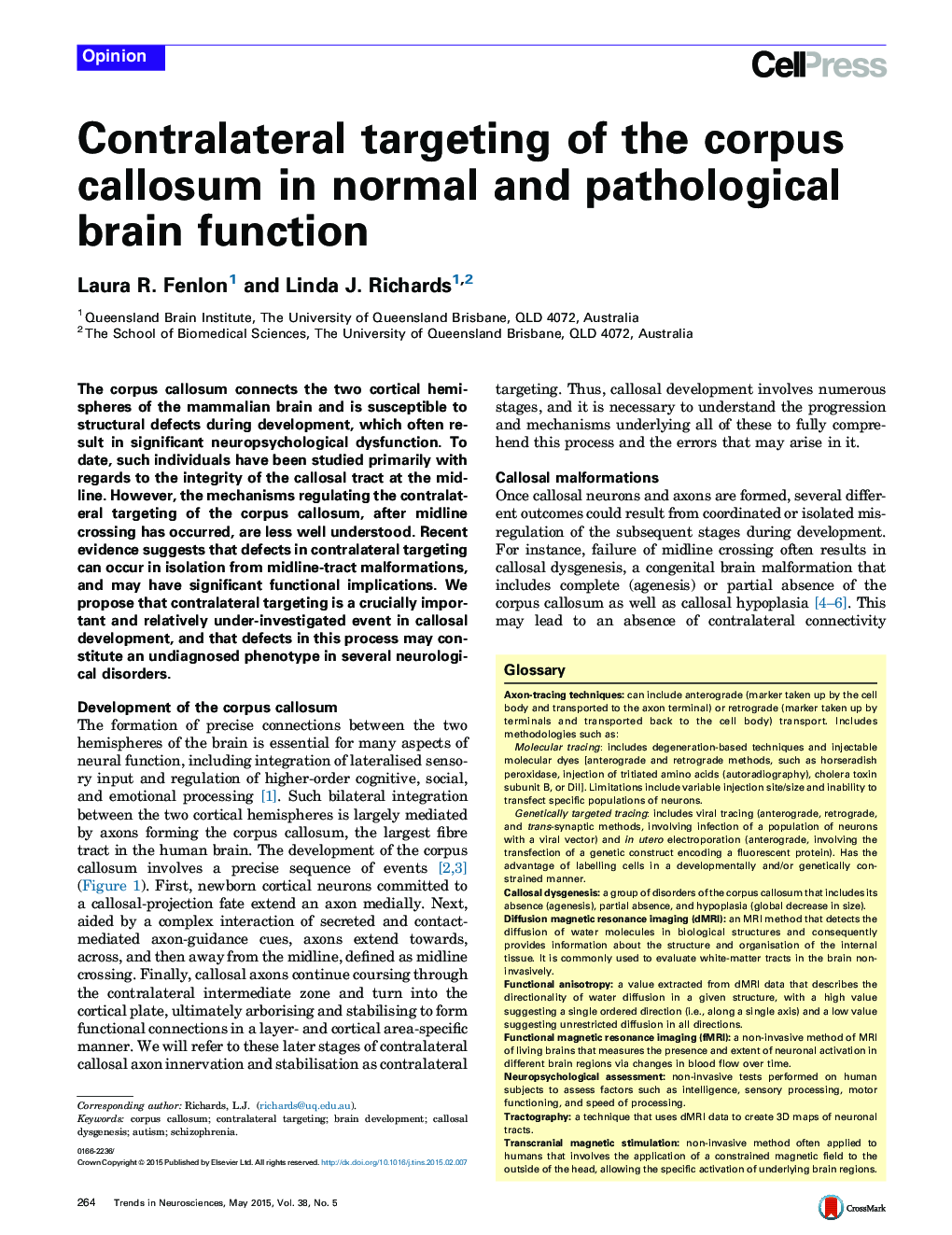| Article ID | Journal | Published Year | Pages | File Type |
|---|---|---|---|---|
| 4354137 | Trends in Neurosciences | 2015 | 9 Pages |
•Callosal malformations are currently categorised almost solely by midline morphology.•Contralateral targeting of callosal axons after midline crossing is poorly understood.•Environmental interaction can affect contralateral targeting after midline crossing.•Contralateral callosal targeting can be highly plastic and variable in humans.•Many neuropathologies may involve undiagnosed changes in contralateral targeting.
The corpus callosum connects the two cortical hemispheres of the mammalian brain and is susceptible to structural defects during development, which often result in significant neuropsychological dysfunction. To date, such individuals have been studied primarily with regards to the integrity of the callosal tract at the midline. However, the mechanisms regulating the contralateral targeting of the corpus callosum, after midline crossing has occurred, are less well understood. Recent evidence suggests that defects in contralateral targeting can occur in isolation from midline-tract malformations, and may have significant functional implications. We propose that contralateral targeting is a crucially important and relatively under-investigated event in callosal development, and that defects in this process may constitute an undiagnosed phenotype in several neurological disorders.
